How to clean the filter of an AEG washing machine?
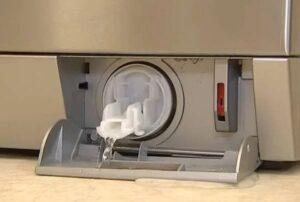 Regular cleaning of the AEG washing machine filter will ensure long-term and trouble-free operation of the equipment. Without “cleaning”, the machine will work intermittently: water is more difficult to pump out through dirty pipes, a clogged pump is overloaded, and the impeller is often blocked by wound hair. As a result, the washer will stop in the middle of the cycle with the drain completely clogged. There is only one way out - to engage in prevention before the problem manifests itself. We'll tell you in detail how to do this.
Regular cleaning of the AEG washing machine filter will ensure long-term and trouble-free operation of the equipment. Without “cleaning”, the machine will work intermittently: water is more difficult to pump out through dirty pipes, a clogged pump is overloaded, and the impeller is often blocked by wound hair. As a result, the washer will stop in the middle of the cycle with the drain completely clogged. There is only one way out - to engage in prevention before the problem manifests itself. We'll tell you in detail how to do this.
What do you need to do first?
The filter cleaning procedure will not require major disassembly of the machine or other complex work. Everything is quite simple - you just need to unscrew the element from the drain system and clean it manually. The main thing is to follow the instructions and remember safety precautions.
The first step is to disconnect household appliances from the supplied communications: light and water supply. Secondly, we prepare the workplace. It is worth remembering that when you unscrew the filter from the machine, the remaining water in the tank will flow. It’s better not to be afraid of the “fountain”, but to lay down rags and oilcloth in advance.
When you unscrew the garbage filter, water will flow out of the hole!
Then we find out where the filter is located. There will be no problems, since most washing machines, including AEG, have it “hidden” behind the technical hatch door. We are talking about a rectangular or round false panel in the lower right corner of the case. It must be dismantled as follows: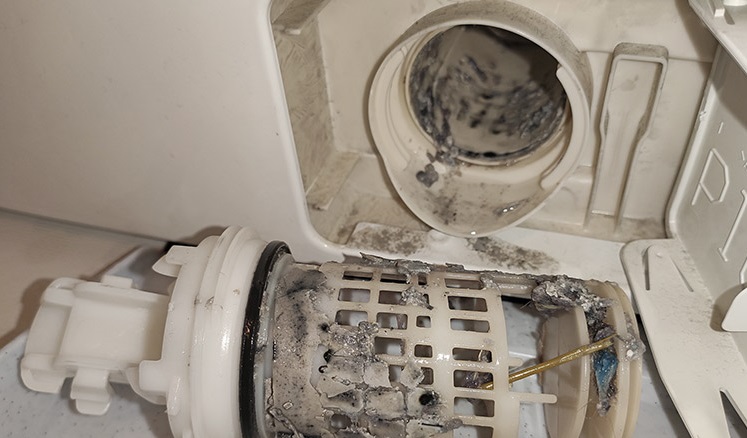
- take a flat screwdriver;
- carefully lift the door;
- release the latches;
- move the panel aside.
By removing the panel, you can see the “entrance” to the drain system.We need a round plastic lid in gray, black or blue - a garbage filter. A prepared container is placed under it, after which the dismantling of the plastic element begins.
How does cleaning happen?
Having decided where the filter is located, we proceed to dismantle it. The procedure is simple: grab the protruding part of the lid and carefully turn it counterclockwise. It is better to unscrew slowly so that the water pours out slowly. Otherwise, a stream will pour out that will splash the entire bathroom.
When the stream of water becomes thin, you can unscrew the filter completely and remove it from the machine body. The next step is to clean it thoroughly. As a rule, it is necessary to act in several stages.
- Removing large debris. By hand, under the tap, all debris adhering to the plastic is washed off from the nozzle - hair, lint, stuck objects, keys or coins.
- Cleaning from plaque. Hard water and detergents leave their mark on the filter - a layer of hardened lime and soap. You can remove stuck particles with an abrasive sponge, an old toothbrush, or soaking for an hour in a lemon solution.
- Final rinsing. A clean filter must be washed under a tap with warm water.
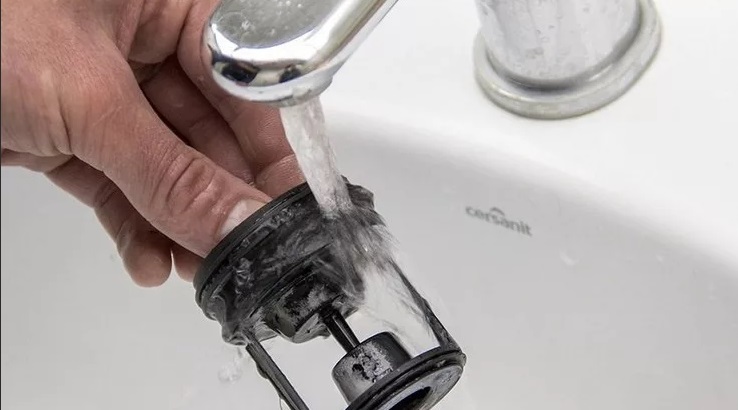
The use of boiling water for cleaning and soaking is strictly contraindicated. At high temperatures, the plastic, the main material of the nozzle, is greatly deformed, and the rubber seal provided for tightness loses its specified elasticity. It’s better not to take risks and wash only in warm or cold water.
It is recommended that you do not stop at cleaning the filter. Along with it, it is worth “tidying up” the adjacent drainage elements. The first step is to clean the “socket” from which the nozzle has been unscrewed.The seat must be treated with a sponge soaked in soapy water and, if necessary, brushed over it with a toothbrush. Be sure to shine a flashlight through the “insides” and use a wire to remove the wound hair from the pump impeller. Only then is the “trash can” tightly screwed into the grooves.
Manufacturers of AEG machines advise carrying out preventive cleaning of the garbage filter at least once every 2-4 months. The interval depends on the frequency of washing. If the machine turns on every day, then it is better to drain it monthly; if less often, once a week, then 3 times a year is enough.
It is also important to consider the type of laundry being washed. Heavily dirty, worn and woolen items contaminate the filter faster due to debris, dust and falling lint. Cleaning also becomes more frequent if you have pets, whose hair gets into the AEG drain system through the fabric, settling on the “trash bin”.
Never touched the filter
Don't forget to clean the garbage filter. Many users have the impression that due to constant contact with water and powder, the washing machine is always clean. This is not so - impurities from the water supply, scale, soap scum, garbage forgotten in pockets and particles of fabric settle in the machine and, without cleaning, lead to serious blockages. As a result, the equipment either breaks down, does not wash well, or becomes hazardous to health.
A dirty filter causes blockages in the drain, pump breakdown, mold and unpleasant odors.
There can be several consequences from a dirty filter. And all of them are risky for AEG and its owner.
- An unpleasant odor that comes from both the machine itself and the washed items. Dirt accumulates in the filter, and microbes multiply due to humidity and heat. All this leads to sourness and stench.
- Mold. A moist environment is nutritious for fungus. It, in turn, corrodes plastic and rubber and poisons the air in the room, causing allergic reactions and other diseases.

- Problems with drainage. When the drum is empty, the water must pass through the garbage filter. If there is too much dirt on it, then the liquid will not be able to be pumped into the sewer at the same rate. The cycle will drag on, the washing time will increase until the machine stops completely.
- Pump failure. Many things can cause a pump to fail. Firstly, draining for too long will cause the mechanism to overheat. Secondly, a foreign object or hair will block the impeller, stopping the pumping of water. Thirdly, dirt will get inside the device. All this will require repair or replacement of an expensive part.
Cleaning the filter takes no more than an hour, especially if you do not let the situation get serious. This is the only way to keep the situation under control, protecting the machine and your health.
After the procedure the filter leaked
Cleaning the filter is considered a simple and quick procedure, but haste and deviation from the instructions can lead to unpleasant consequences. One of them is leakage. The danger is that the problem does not appear immediately, but after several cycles and even days. There are several reasons for this phenomenon.
- Incorrect installation. The filter nozzle should fit tightly and evenly into the seat. This is the only way to ensure that there is no shift in the thread and a leak in the seal. Otherwise, water will seep through the gap and flow onto the floor, threatening equipment and people.
- Marriage. Most likely, the rubber gasket provided on the filter is cracked due to long-term use or damaged due to careless cleaning.In this case, the seal will not provide the required density, and the tightness will be broken. You will have to look for a replacement rubber band or install a new “trash bin”.
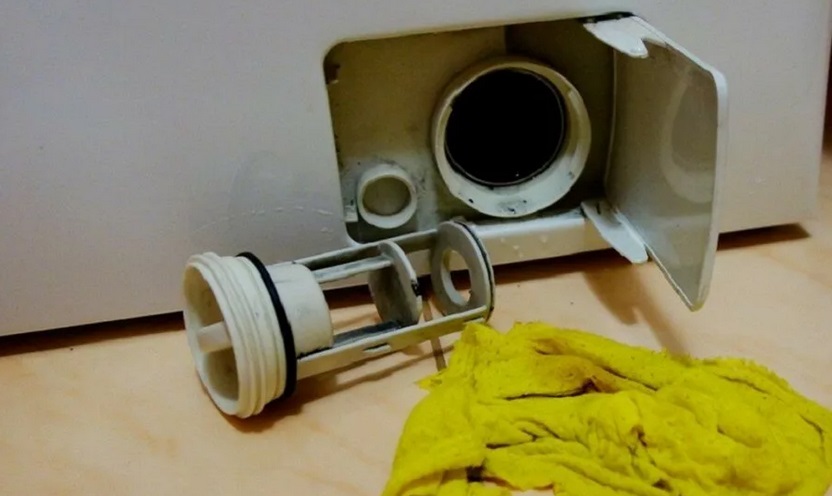
- Broken thread. If you dismantle and install carelessly, you can damage the grooves on the seat or the filter itself. It is logical that the nozzle does not fit tightly - water begins to flow through the resulting hole. Especially during the spin cycle, when the washing machine begins to vibrate, and with it the drainage catcher. The breakdown is corrected by repairing the “socket” or replacing the spiral.
After cleaning the debris filter, you need to run a cycle and check for leaks!
Regular cleaning of the filter will be an excellent prevention of problems with the drainage system of AEG. You just need to act carefully, follow the instructions and do not forget about safety precautions.
Interesting:
1 reader comment



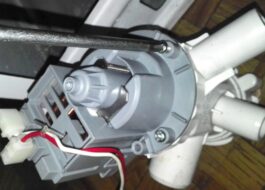
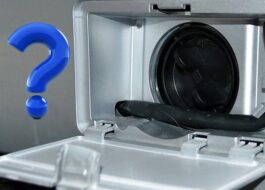
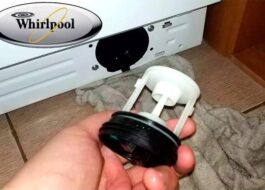















I did everything as taught in the instructions, but I can’t remove the filter itself from its slot. Can anyone suggest what I can do myself? Thank you.